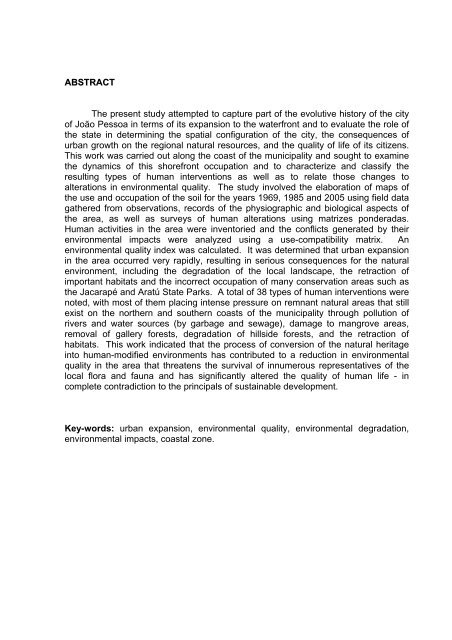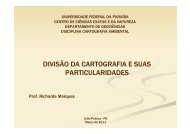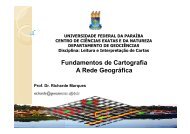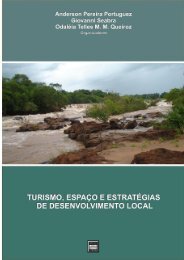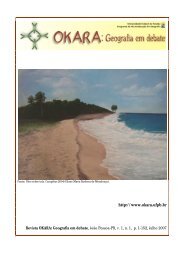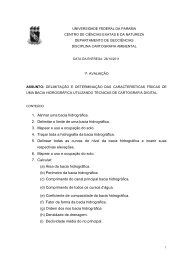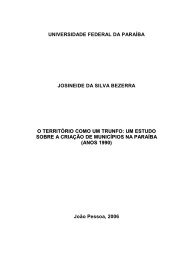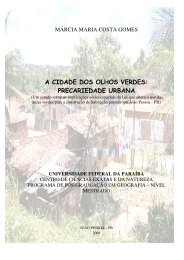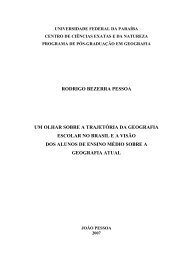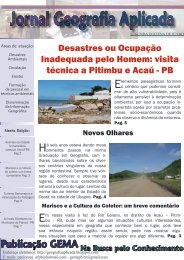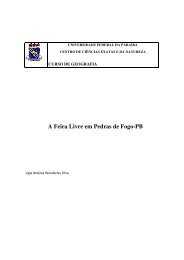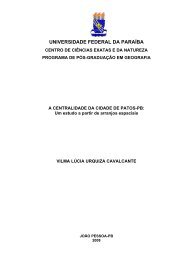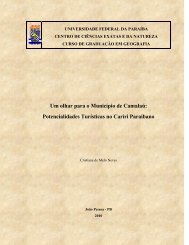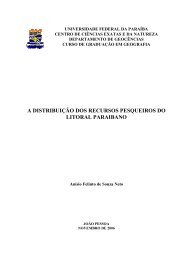expansão urbana e qualidade ambiental no litoral de joão pessoa-pb.
expansão urbana e qualidade ambiental no litoral de joão pessoa-pb.
expansão urbana e qualidade ambiental no litoral de joão pessoa-pb.
You also want an ePaper? Increase the reach of your titles
YUMPU automatically turns print PDFs into web optimized ePapers that Google loves.
ABSTRACT<br />
The present study attempted to capture part of the evolutive history of the city<br />
of João Pessoa in terms of its expansion to the waterfront and to evaluate the role of<br />
the state in <strong>de</strong>termining the spatial configuration of the city, the consequences of<br />
urban growth on the regional natural resources, and the quality of life of its citizens.<br />
This work was carried out along the coast of the municipality and sought to examine<br />
the dynamics of this shorefront occupation and to characterize and classify the<br />
resulting types of human interventions as well as to relate those changes to<br />
alterations in environmental quality. The study involved the elaboration of maps of<br />
the use and occupation of the soil for the years 1969, 1985 and 2005 using field data<br />
gathered from observations, records of the physiographic and biological aspects of<br />
the area, as well as surveys of human alterations using matrizes pon<strong>de</strong>radas.<br />
Human activities in the area were inventoried and the conflicts generated by their<br />
environmental impacts were analyzed using a use-compatibility matrix. An<br />
environmental quality in<strong>de</strong>x was calculated. It was <strong>de</strong>termined that urban expansion<br />
in the area occurred very rapidly, resulting in serious consequences for the natural<br />
environment, including the <strong>de</strong>gradation of the local landscape, the retraction of<br />
important habitats and the incorrect occupation of many conservation areas such as<br />
the Jacarapé and Aratú State Parks. A total of 38 types of human interventions were<br />
<strong>no</strong>ted, with most of them placing intense pressure on remnant natural areas that still<br />
exist on the <strong>no</strong>rthern and southern coasts of the municipality through pollution of<br />
rivers and water sources (by garbage and sewage), damage to mangrove areas,<br />
removal of gallery forests, <strong>de</strong>gradation of hillsi<strong>de</strong> forests, and the retraction of<br />
habitats. This work indicated that the process of conversion of the natural heritage<br />
into human-modified environments has contributed to a reduction in environmental<br />
quality in the area that threatens the survival of innumerous representatives of the<br />
local flora and fauna and has significantly altered the quality of human life - in<br />
complete contradiction to the principals of sustainable <strong>de</strong>velopment.<br />
Key-words: urban expansion, environmental quality, environmental <strong>de</strong>gradation,<br />
environmental impacts, coastal zone.


